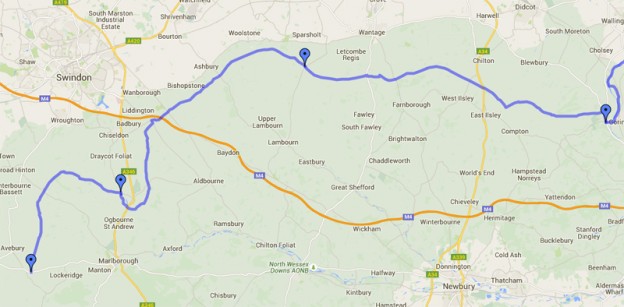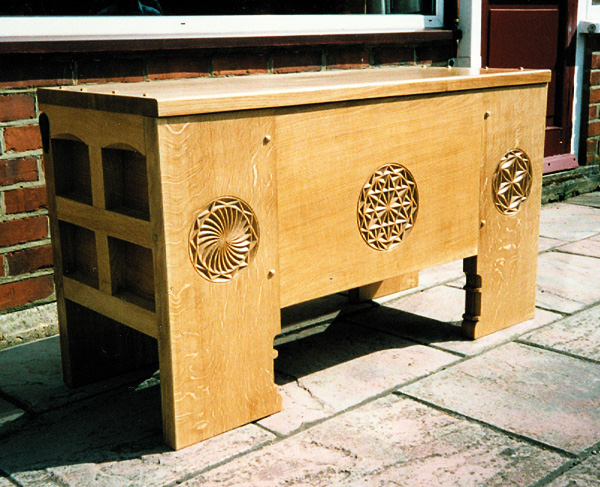Information provided by the OLHA (www.olha.org.uk)
4th – Chalgrove – Colin Oakes “The role of women in the First World War”. John Hampden Hall, High Street, 7:45pm.
4th – Weston on the Green – Julie Ann Godson “1066: Oxfordshire’s part in the Norman Conquest”. Memorial Village Hall, 7:30pm.
5th – Hook Norton – Antonia Catchpole “Early Development in Chipping Norton”. Baptist Church Hall, Netting Street, 7:30pm.
6th – Otmoor – Brian Gilmour “In the footsteps of the Argonauts: Archaeological adventures in ancient Colchis (Western Georgia)”. Islip Village Hall, 8:00pm.
6th – The Oxfordshire Museum – Liz Woolley “The Common Lodging-House in Victorian England”. Coach House, Oxfordshire Museum, Woodstock, 7:30pm.
11th – Chipping Norton – Amanda Ponsonby “The Sarsden Sheepwash”. Methodist Hall, West Street, 7:30pm.
11th – Radley – Peter Neal – “MG Cars in Abingdon”. Primary School, 7:30pm.
12th – Thame – Roger Mason “Votes for Women”. Barns Centre, Church Road, 7:30pm.
13th – Deddington – Jan Warner “Memories of Deddington in the 1940s and 1950s”. Windwill Centre, 7:30pm.
13th – Stanford in the Vale – Julie Ann Godson “1066: Oxfordshire’s part in the Norman Conquest”. Village Hall, 7:45 pm.
14th – Banbury – Steven Parissien “Compton Verney: Past, Present and Future”. Banbury Museum, 7:30pm.
14th – Wootton & Dry Sandford – Liz Woolley “Beer, sausages and marmalade: Food, politics and tourism in 19th-century Oxford”. Wootton Community Centre, 7:30pm.
18th – Adderbury – Stefan White “Skulduggery in the shrubbery: the sad, true and fascinating story of the Tradescants’’. Methodist Chapel schoolroom, Chapel Lane, 7:30pm.
18th – Goring Gap – Mark Stevens “Broadmoor revealed: The Victorian asylum – an introduction to Britain’s oldest secure hospital”. Goring Village Hall, 8:00pm.
18th – Kennington – Julie Ann Godson “Memories of the Vale: A lost way of life before the railways came to the countryside”. Methodist Church, Upper Road, 7:45pm.
19th – Witney – Kate Hornbrook “Place and field names in East Oxford”. Methodist Church, High Street, 7:30pm.
20th – Bloxham – Sarah Morris “The travels of Henry VIII and Anne Boleyn in Oxfordshire”. Jubilee Park Hall, Barley Close, 7:30pm.
20th – Littlemore – Clare Sargent “The History of Radley College”. Giles Road Community Centre, 7:30pm.
21st – Eysham – Mark Davies “Daniel Harris: gaoler, builder, engineer and architect”. Church Hall, Thames Street, 7:30pm.
21st – Sibfords – Liz Woolley “Oxfordshire and the Spanish Civil War”. Sibford Village Hall, 8:00pm.
21st – Whitchurch & Goring Heath- Alan Copeland “Eccentric London part 2”. Goring Heath Parish Hall, 8:00pm.
21st – Wychwoods – Julie Ann Godson “Memories of the Vale: rural life before the railways”. Milton Village Hall, 7:30pm.
25th – Oxford Town Hall – Katherine Hughes “From South Wales to Oxford”. Part of the Journeys to Oxford project. The Old Museum, Oxford Town Hall, 2:00pm.
25th – Oxfordshire Family History Society – Tim Healey “Sex, Drink and Death in 17th-century Oxfordshire”. Exeter Hall, Oxford Road, Kidlington, 8:00pm.
25th – Launton – Stephen Barker “The Battle of Cropredy Bridge”. Grange Farm Mews, Station Road, 7:45pm.
26th – Enstone – Carol Hardy “The Rothschilds: family, fortune and philanthropy”. Venue tbc, 7:30pm.
26th – Hanney – Jill Hind “The History of the Oxfordshire Water Supply”. War Memorial Hall, East Hanney, 8:00pm.
26th – Kidlington – Valerie Offord “Miss Jemima’s Excellent Adventure:The tale of the first Thomas Cook package tour”. Moorside Place, off The Moors, 7:50pm.
26th – Sutton Courtenay – Ken Welsh “Prehistoric, Roman and Saxon Discoveries at Bridge Farm, Sutton Courtenay”. Village Hall, 7:30pm.
27th – Dorchester – Ellie Reid “Dressing Up the Past: Historical Pageants in Early Twentieth Century Oxfordshire”. Dorchester Village Hall, 7:30pm.
28th – Aston – Liz Woolley “Beer, Sausages and Marmalade: Food, Politics and Tourism in 19th-century Oxford”. The Fellowship Centre, Cote Road, 7:30pm.


